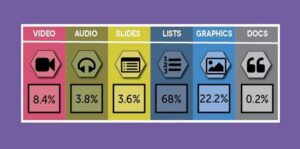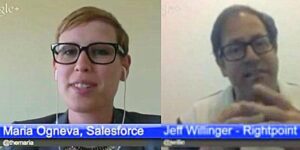
Social Influence and Your Brand: Connecting the Dots [Webinar]
The social era is creating a whole new level of opportunity for business and personal brands. Are you making the most of it?

The social era is creating a whole new level of opportunity for business and personal brands. Are you making the most of it?

TalentCulture is thrilled to be featured on Forbes List of “Best Websites For Your Career.” Why? In the spirit of lists everywhere, here are 3 reasons…

How does your digital content compare with popular blogs? And what can you do to improve? See what a TalentCulture audit revealed, and request a free audit for your site…

Conferences: Who’s redefining the concept, and what does it mean for professional communities and personal brands? The case for crowdsourcing

Digital communities are increasingly important to business organizations. But what really makes an enterprise community effective?
Birds aren’t known to be mental giants. After all, does anyone really want to be called a “bird brain?” Yet, when it comes to communities, perhaps one of the smartest things you can do is to think like a bird. Here’s why…
I never get tired of talking about social communities and their impact on brands and the recruiting process for the right talent. But what does it mean to “manage” communities – and what is the role of a “community manager” in today’s social business environment?
Businesses are calculating the risks and rewards of social media involvement as never before. But these days, when deciding how social media fits into the workplace, leaders would be wise to watch and listen for signals from employees. The noise is deafening…
Social learning is everywhere around us – in short, bursty ideas that simultaneously draw us in and distract us from whatever we were intending to accomplish. It also brings us together across the digital divide. It’s time to embrace quality peer-to-peer exchange and shared insights…
What’s your morning communications, social media routine like? Mine’s getting more complicated every day. Personally, just email requires checking at least three accounts on three
The promise of Talent Communities to provide a more efficient employment process can be huge, with recruiting time spent, talent quality, hiring costs and “time to hire” metrics drastically altered from what we have all come to expect over the last 40 years. By maintaining a specific Community goal, a company has a real opportunity to attract workers like George Bailey who aren’t looking for a new job, but are focused on taking on greater challenges instead. The elusive “other 80%” of the workforce, that have been difficult to attract with employment advertising and referrals, can be cultivated with a Talent Community. This can be a major break through that if fully embraced can change the employment landscape forever.
What opportunities really lie ahead at the crossroads of workplace learning and social media? It’s a topic we live with every day at TalentCulture – as our ongoing #TChat “learning community” conversation continues…
Thanks to a new set of location-based mobile applications that have cropped up over the past year, our social interactions online are beginning to impact our real world lives in very real ways. Here’s how they work now:
Social media is all the rage. But the power of social media is not in the tools. It’s in the relationships behind the tools. Here’s how employers can leverage social tools to cultivate talent communities…